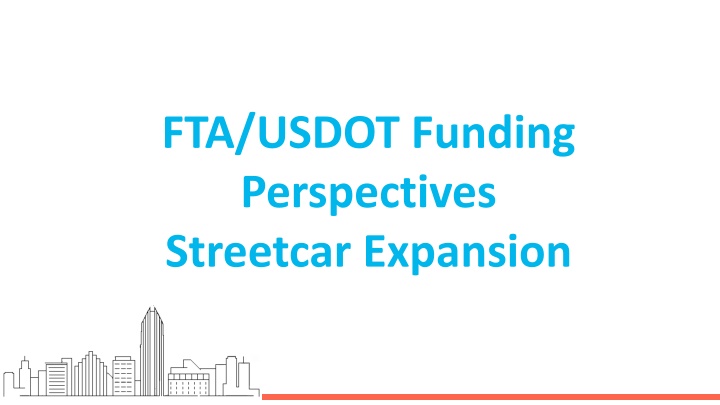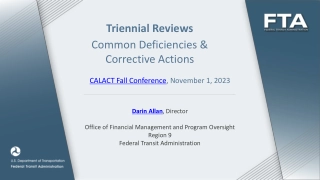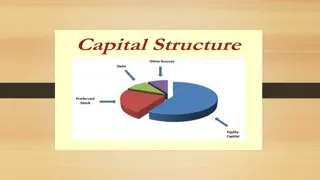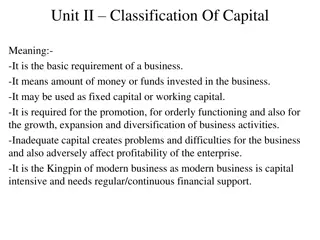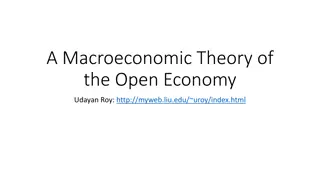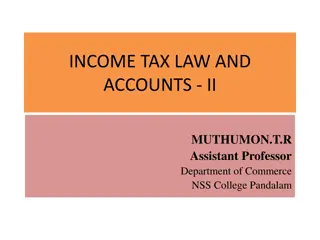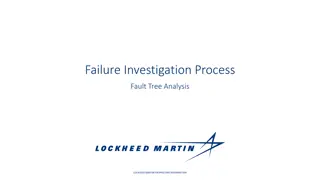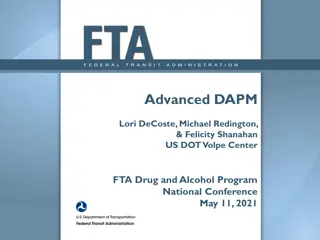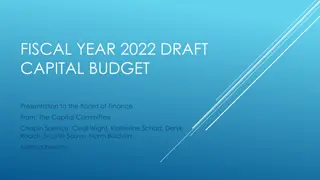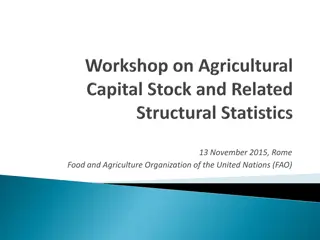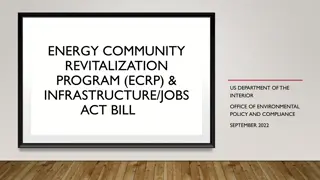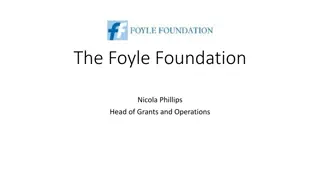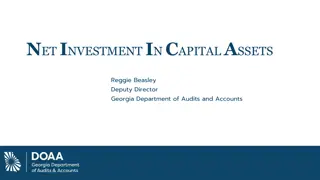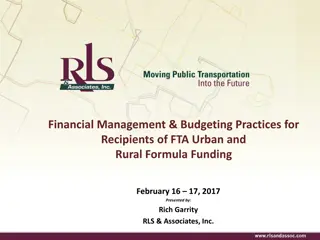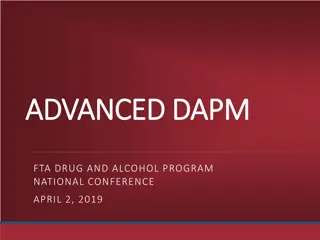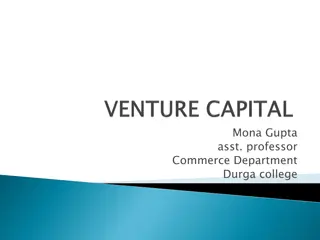FTA Capital Investment Grants Program Overview
FTA's Capital Investment Grants (CIG) program, a significant funding source for transit projects, supports various transit modes like light rail, heavy rail, streetcar, and more. With bipartisan backing, the program emphasizes rigorous evaluation criteria and oversight to allocate funds effectively and enhance public transportation infrastructure.
Uploaded on Mar 15, 2025 | 3 Views
Download Presentation

Please find below an Image/Link to download the presentation.
The content on the website is provided AS IS for your information and personal use only. It may not be sold, licensed, or shared on other websites without obtaining consent from the author.If you encounter any issues during the download, it is possible that the publisher has removed the file from their server.
You are allowed to download the files provided on this website for personal or commercial use, subject to the condition that they are used lawfully. All files are the property of their respective owners.
The content on the website is provided AS IS for your information and personal use only. It may not be sold, licensed, or shared on other websites without obtaining consent from the author.
E N D
Presentation Transcript
FTA/USDOT Funding Perspectives Streetcar Expansion
Pete Mazurek Division Chief for Capital Projects Office of Planning and Environment Responsible for projects in the Capital Investment Grants (CIG) program pipeline From Entry into Project Development through the receipt of a construction grant Manages the cadre of CIG specialists at FTA HQ ( team leaders ) FTA 10 years, 20+ years private sector Travel Forecasting background Multi-modal transit/transportation nerd
Presentation Outline FTA Funding Sources FTA Transit Oriented Development (TOD) Pilot Program FTA Capital Investment Grants (CIG) Program Capital Project Challenges and Considerations 3
FTA Transit Oriented Development Pilot Program Discretionary grant program funded in Bipartisan Infrastructure Law at $13-14M/yr Provides funding for comprehensive planning as well as development in corridors that have or are considering fixed guideway or core capacity transit capital investments Comprehensive planning projects must examine ways to Improve economic development and ridership, Foster connectivity and accessibility Improve transit access for pedestrian and bicycle traffic Engage the private sector Enable mixed-use development near transit stations Annual Notice of Funding Opportunity and award selections November 2022 FTA announced the award of $13 M to 19 projects in 14 states FY2023 round of projects recently closed to submissions; under review For more info on the program, please see https://www.transit.dot.gov/TODPilot 4
Capital Investment Grants (CIG) Program Largest FTA discretionary grant program Bipartisan Infrastructure Law guarantees $1.6 B per year and provides for up to $3 B additional funding each year (subject to Congressional appropriations) Funds light rail, heavy rail, commuter rail, streetcar, and bus rapid transit capital projects Demand is high more than 60 projects in the program seeking CIG funds Law requires: Project sponsor must be a State or Local Government Authority Projects must complete a multi-year, multi-step process to be eligible for funds FTA must evaluate and rate projects on multiple statutory criteria FTA must perform project oversight FTA must prepare Annual Report to Congress with proposed funding levels & project ratings Three types of eligible projects: New Starts, Small Starts, and Core Capacity 5
Streetcars Funded with CIG Grants CIG Construction Grants Awarded Projects Currently Seeking CIG Grants LA New Orleans St. Charles Streetcar Rebuild 1987 AWARD TN Memphis Medical Center Rail Extension 2000 AWARD LA New Orleans Canal Street Corridor OR Portland Eastside Streetcar NC Charlotte City LYNX Gold Line Phase 2 CA Santa Ana and Garden Grove Streetcar 2018 AWARD AZ Tempe Streetcar MO Kansas City Streetcar Main Street Ext CA Los Angeles Downtown Streetcar CA Sacramento Downtown Riverfront Streetcar FL Tampa Streetcar Extension & Modernization WA Seattle Center City Connector 2003 AWARD 2009 AWARD 2016 AWARD 2019 AWARD 2021 AWARD 6 6
Types of Eligible CIG Projects New Starts Fixed guideway projects Small Starts Fixed guideway or corridor- based BRT projects Core Capacity Project expands capacity by > 10% in an existing fixed guideway corridor that is at capacity today or will be in ten years > $400 M in total cost or that are seeking >$150 M in CIG funds < $400 M in total cost and that are seeking <$150 M in CIG funds CIG max share = 80% CIG max share = 60% CIG max share = 80% 7
Multi-Year, Multi-Step CIG Process New Starts and Core Capacity Process Average time to complete the steps and receive a construction grant from FTA is 3- 4 years Full Funding Grant Agreement Project Development Engineering Average time to complete the CIG process, undertake construction, and open for revenue service is 7 - 9 years Small Starts Process Average time to complete the steps and receive a construction grant from FTA is 2.5 - 3 years. Project Development Small Starts Grant Agreement Average time to complete the CIG process, undertake construction, and open for revenue service is 5 years = FTA approval Legend = FTA evaluation, rating, and approval 8
Individual Criteria Ratings Mobility Improvements (16.66%) Overall Rating Summary Ratings Environmental Benefits (16.66%) Congestion Relief (16.66%) Project Justification Cost-Effectiveness (16.66%) (50% of Overall Rating) Must be at least Medium for project to get Medium or better Overall Rating Economic Development (16.66%) Overall Project Rating Land Use (NS or SS) or Capacity Needs (CC) (16.66%) Current Condition (25%) Local Financial Commitment (50% of Overall Rating) Commitment of Funds (25%) Must be at least Medium for project to get Medium or better Overall Rating Reliability/ Capacity (50%) 9
Common Transit Capital Project Challenges All capital projects have challenges! Projects being appropriately scaled to demand (Understanding the market) Project management arrangements (right sponsor, right partnerships) Unrealistic project schedules (managing expectations and relationships) Unrealistic cost estimates (Is the design right-sized?) Procurement challenges (scale, terms, and vendor interest) Funding/Financing (obtaining it, managing it, and complying with terms) Building and maintaining local consensus 10
FTA Mission, Vision, Values VISION MISSION A Better Quality of Life for All Built on Public Transportation Excellence Improve America s Communities through Public Transportation Provide reliable, transparent, responsive, and anticipatory services to meet stakeholder needs SERVICE VALUES INTEGRITY Commitment to the highest professional and ethical standards INNOVATION Foster new ideas, concepts, and solutions for improved outcomes Optimize decisions, resources, and systems to make long-term positive impacts on the environment, infrastructure, and safety SUSTAINABILITY Remove barriers for systemically underserved communities to access all aspects of economic, social, and civic life EQUITY 11
Key Takeaways FTA and USDOT funding/financing programs are available to support planning, development, and construction of transit capital projects Recent legislation has continued to expand funding for transit projects The CIG program is complex with many requirements, but nevertheless continues to be popular and highly competitive Yes, streetcars can succeed in obtaining such funding While streetcar projects can encounter many of the same challenges as other modes, some challenges may be more prevalent and merit careful forethought.
Pete Mazurek (FTA) Contact Info Pete Mazurek Division Chief for Capital Projects Office of Planning and Environment, Federal Transit Administration Peter.Mazurek@dot.gov (202) 366-1627 https://www.transit.dot.gov/ CIG Program Page: https://www.transit.dot.gov/CIG TOD Pilot Program Page: https://www.transit.dot.gov/TODPilot Other FTA/USDOT Programs: https://www.transit.dot.gov/funding/federal-programs-support-public-transportation
